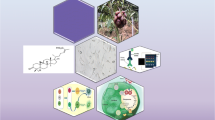Abstract
Three classes of kojic acid derivatives were synthesized and examined for their antiproliferative activity against HeLa cells. Both 8b and 11 co-treated with copper ion exhibited synergistic effect on the HeLa cell growth inhibition with GI50 values of 11.9 and 7.1 μM, respectively. Flow cytometric analysis of HeLa cells revealed that 11-Cu co-treatment induced the sub-G1 arrest in a dose-dependent manner, suggesting that the growth-inhibitory effect is attributed to DNA fragmentation. Moreover, western blot of HeLa cells cytosolic extracts displayed the cleavage of the 116-kDa protein poly(ADP-ribose) polymerase and activation of caspase-3 by the reduced level of the 32-kDa proenzyme, indicating that the caspase-dependent apoptotic pathway was involved. We further demonstrated that MAPK pathway regulators such as ERK and p38 were activated in response to 11-Cu co-treatment, suggesting that the intracellular oxidative stress was dramatically stimulated by the copper ion. Taken together, we have successfully synthesized kojic acid-derived copper-induced apoptotic agents.






Similar content being viewed by others
References
Aytemir MD, Ozçelik B (2010) A study of cytotoxicity of novel chlorokojic acid derivatives with their antimicrobial and antiviral activities. Eur J Med Chem 45:4089–4095
Bentley R (2006) From miso, sake and shoyu to cosmetics: a century of science for kojic acid. Nat Prod Rep 23:1046–1062
Blumenthal CZ (2004) Production of toxic metabolites in Aspergillus niger, Aspergillus oryzae, and Trichoderma reesei: justification of mycotoxin testing in food grade enzyme preparations derived from the three fungi. Regul Toxicol Pharm 39:214–228
Brewer GJ, Dick RD, Grover DK, LeClaire V, Tseng M, Wicha M (2000) Treatment of metastatic cancer with tetrathiomolybdate, an anticopper, antiangiogenic agent: phase I study. Clin Cancer Res 6:1–10
Burkitt MJ, Bishop HS, Milne L, Tsang SY, Provan GJ, Nobel CS (1998) Dithiocarbamate toxicity toward thymocytes involves their copper-catalyzed conversion to thiuram disulfides, which oxidize glutathione in a redox cycle without the release of reactive oxygen species. Arch Biochem Biophys 353:73–84
Cabanes J, Chazarra S, Garcia-Carmona F (1994) Kojic acid, a cosmetic skin whitening agent, is a slow-binding inhibitor of catecholase activity of tyrosinase. J Pharm Pharmacol 46(12):982–985
Fickova M, Pravodova E, Rondhal L, Uher M, Brtko J (2008) In vitro antiproliferative and ctotoxic activities of novel kojic acid derivatives: 5-benzyloxy-2-selenocyanatomethyl- and 5-methoxy-2-selenocyanatomethyl-4-pyranone. J Appl Toxicol 28:554–559
Imafuku K, Ishizaka M, Matsumura H (1979a) Structure of 5-hydroxy-2-hydroxymethyl-4-pyridones. Bull Chem Soc Jpn 52:107–110
Imafuku K, Takahashi K, Matsumura H (1979b) Substituent effects on 6-substituted 3-hydroxy-1-methyl-4-pyridones. Bull Chem Soc Jpn 52:111–113
Nobel CI, Kimland M, Lind B, Orrenius S, Slater AF (1995) Dithiocarbamates induces apoptosis in thymocytes by raising the intracellular level of redox-active copper. J Biol Chem 270:26202–26208
Reddy BV, Reddy MR, Madan Ch, Kumar KP, Rao MS (2010) Indium(III) chloride catalyzed three-component coupling reaction: a novel synthesis of 2-substituted aryl(indolyl)kojic acid derivatives as potent antifungal and antibacterial agents. Bioorg Med Chem 20:7507–7511
Redman BG, Esper Q, Pan Q, Dunn RL, Hussain HK, Chenevert T (2003) Phase II trial of tetrathiomolybdate in patents with advanced kidney cancer. Clin Cancer Res 9:1666–1672
Toy AD, Smith TD (1971) Electron spin resonance evidence for the existence of a dimeric form of the copper (II) chelate of kojic acid. J Am Chem Soc 93(12):3049–3050
Yabuta T (1924) Constitution of kojic acid, a γ-pyrone derivative formed by Aspergillus oryzae from carbohydrates. J Chem Soc Trans 125:575–587
Yoo DS, Lee J, Choi SS, Rho HS, Cho DH, Shin WC, Cho JY (2010) A modulatory effect of novel kojic acid derivatives on cancer cell proliferation and macrophage activation. Pharmazie 65:261–266
Acknowledgments
Financial support from the National Science Council of the Republic of China and Tamkang University to A. Y. Shaw is gratefully acknowledged.
Author information
Authors and Affiliations
Corresponding author
Rights and permissions
About this article
Cite this article
Chen, YH., Lu, PJ., Hulme, C. et al. Synthesis of kojic acid-derived copper-chelating apoptosis inducing agents. Med Chem Res 22, 995–1003 (2013). https://doi.org/10.1007/s00044-012-0094-y
Received:
Accepted:
Published:
Issue Date:
DOI: https://doi.org/10.1007/s00044-012-0094-y




